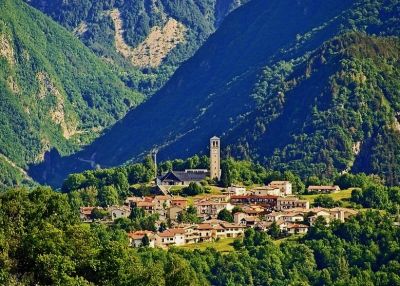There’s no doubt Italy is a beautiful country and an extremely popular tourist destination. From its mountainous northern border to the seaside cliffs of Sicily’s southern shore, the architecture – both manmade and natural – is breathtaking. Italy’s natural beauty is showcased by more than 300 national and regional parks and nature reserves and hundreds of archeological sites.
One of Italy’s smallest national parks was established in 2016 and encompasses almost 80 percent of Pantelleria Island. Located in the Strait of Sicily, and closer to Tunisia than Sicily, the volcanic island is within the province of Trapani. Montagna Grande, at around 2,740 feet above sea level, is the highest point on Pantelleria and overlooks acres of head-trained vines grown without trellises or any type of support and dammusi, rural houses built from volcanic rock.
In 2014, the vines were inscribed on UNESCO’s Representative List of the Intangible Cultural Heritage of Humanity for the sustainable methods used in “the traditional practice of cultivating head-trained bush vines (vite ad alberello)...transmitted through generations of vine growers and farmers of the Mediterranean island of Pantelleria.” The dammusi are built to withstand the wind, the heat, the lack of rain with thick walls, domed roofs, small windows and doors, and an enclosed citrus garden “well protected from the incessant wind that beats the island.” Throughout the park, hot springs, volcanic lakes and steam vents, hiking trails and paths to the sea provide a variety of natural wonders created by the ever-changing environment.
Isola di Pantelleria is Italy’s only national park in Sicily, but Sicily, slightly less than one-third the size of similar triangular-shaped South Carolina, is home to the Valley of the Temples, one of the largest archaeological sites in the world and one of 12 archaeological sites to explore in Sicily.
In the northeastern region of Friuli-Venezia Giulia, the Julian Prealps Nature Park spans across the border of Italy and Slovenia. Established in 1996, in 2009, the nature park obtained a Transboundary Charter with Slovenia’s Triglav National Park from Europarc Federation, a professional network of European Protected Areas. In 2014, the parks were issued a certificate for a transboundary pilot region for eco-connectivity from the Alpine Convention, an international territorial treaty for the sustainable development of the Alps, established to “protect the natural environment of the Alps while promoting its development.” In 2016, the Transboundary Ecoregion Julian Alps was certified with the European Charter for Sustainable Tourism.
The park comprises the eastern edge of the Alps, and its location is affected by three different biogeographical areas: Mediterranean, Illyrian, and Alpine, providing a unique biodiversity of more than 1,200 species of flora and fauna. The park has walking paths, mountain bike and ski trails, guided tours and lodging.
Along the coast of Campania, in the province of Salerno, Cilento e Vallo di Diano National Park includes the ancient Roman cities of Paestum and Velia, the northern boundary of the Greek colonies of Magna Graecia, built during the 700s and 600s BC. Italy’s second largest park was inscribed in 1998 as a UNESCO site for its “outstanding cultural landscape...groups of sanctuaries and settlements along its three east–west mountain ridges vividly portray the area’s historical evolution...a major route not only for trade, but also for cultural and political interaction during the prehistoric and medieval periods.”
Before its UNESCO inscription, in 1995, a Presidential Decree established the Park and guaranteed the protection of both the natural environment and the heritage buildings. It also encouraged the preservation of the cultural landscape within a program of sustainable development. Additionally, much of the park is a National Forest, which comes under the strict control of the Italian Forest Law.
Three well-preserved temples, dating to around 500 BC, and ruins of the surrounding city, along with an ancient castle and almost three miles of underground cave routes are features of the park. From the peaks of the Alburni Mountains, a section of the Lucan Apennines bordering Campania and Basilicata, to the beaches along the southeastern coast of the Tyrrhenian Sea, the park provides “an extraordinary naturalistic richness of the heterogeneous territory [that] goes hand in hand with the mythical and mysterious character of a land rich in history and culture.”
Isola di Pantelleria, Julian Prealps Nature Park and Cilento e Vallo di Diano National Park are just three of the hundreds of sites throughout Italy that are valued not only for their historical and cultural significance, but also for the importance of recognizing their natural beauty and in preserving each site for sustainable tourism.



